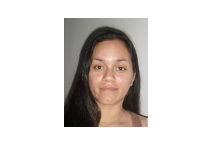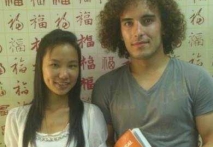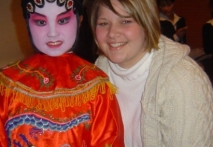学习心得
语风汉语学生Jennifer
学习心得
语风汉语学生Jennifer
我叫Jennifer,我非常喜欢在语风汉语无锡校学习汉语,这是一个非常好的学...
语风汉语无锡校 Zack
学习心得
语风汉语无锡校 Zack
我叫Zack,我是法国人,无锡语风汉教中心是一个学习中国文化和对外汉语的好...
语风汉语学生Kevin
学习心得
语风汉语学生Kevin
语风汉语是一个最理想的学习汉语和中国文化的好地方,学校给我们提供了很多...
语风汉语学生Florent
学习心得
语风汉语学生Florent
我非常喜欢无锡语风汉语学校,这里真的有最简单的汉语学习方法,我学习汉...
语风汉语学生Brad
学习心得
语风汉语学生Brad
我叫Brad,我是澳大利亚人,我再语风汉语学校学习汉语。我现在可以独立和我的...
语风汉语我的无锡学习汉语之路
学习心得
语风汉语我的无锡学习汉语之路
Cherry Queen 中文名: 钱沫以 &nbs...
无锡语风汉语优秀汉语学生Victoria
学习心得
无锡语风汉语优秀汉语学生Victoria
维多利亚Victoria,来自德国的一位11岁的小女孩 ,现读于语...
无锡语风汉语外国学生Michael的汉语学习之路
学习心得
无锡语风汉语外国学生Michael的汉语学习之路
Michael 刚刚来我们无锡语风汉语学校不久的美国学...
苏州汉语学生Jude
学习心得
苏州汉语学生Jude
我叫Jude,在苏州语风汉语学校学习汉语,我也在无锡语风汉语学校学习过很长时间...
无锡语风汉语学校Jessie
学习心得
无锡语风汉语学校Jessie
我学习汉语已经八年了,我能听明白别人说汉语,但是我自己说汉语却觉得说...
汉语 加官方
关注了解更多对外汉语资讯

0510-81151808
1866 1199 988
Sandy.Swun
519988808
无锡新区长江一号 茂业
深茂商务中心8号楼405室
无锡语风学校
语风汉语教学中心
无锡语风国际教育交流中心
Wuxi Mandarin Education School
-
Home > 资讯中心 > 语风外国语教师博客展播
How to Learn Mandarin Chinese Part 1
Many English speakers found that Mandarin Chinese is quite a complex language to learn. However, with commitment and daily practice it is certainly possible to successfully master. After 6 years of teaching Mandarin Chinese I have some suggestions on how best to learn this surprisingly easy language.
Part 1of 3: Mastering the Basics
The very first thing you should do is to spend at least a month just mastering the basic phonetics of Chinese language. I don’t think this can be over emphasized enough how important these early stages of pronunciation practice are. Because once you develop a bad pronunciation habit it will be very hard to break. You will be very glad you spent the time you did practicing the basic sounds of Mandarin.
It may of course be very boring in the beginning just rhyming off sounds like a parrot and not actually learning any words, but these are the basic building blocks of Mandarin Chinese so I hope you trust me when I say practice practice practice the basic sounds until you are blue in the face.
1. Learn Chinese Pinyin.
Pinyin is a phonetic system developed to help people to read and write Mandarin Chinese. Hanyu pinyin is the most common form of such Romanization, and is used in many textbooks and teaching materials. A pīnyīn syllable consists of an initial(consonant ) and a final( vowel and ending) with a tone.
•Pinyin allows students of Mandarin to focus on their pronunciation, while also enabling them to read and write, without needing to learn complex Chinese characters. Although Pinyin uses the Roman alphabet, the pronunciation of its letters is often not intuitive to English speakers, which is why it must be studied carefully before it can be used.
•For example, the letter "c" in Pinyin is pronounced like the "ts" in the word "bits", the letter "e" is pronounced like the "er" in the word "hers" and the letter "q" is pronounced like the "ch" in the word "cheap". Due to these differences, it is essential that you learn the correct Pinyin pronunciations before using it as a guide.
•Although learning Pinyin pronunciations may seem like a pain, it can be extremely beneficial to your language learning and is still significantly easier than learning to recognize traditional Chinese characters.
2. Practice using the four Mandarin tones.
Mandarin Chinese is a tonal language, which means that different tones can change the meaning of a word, even if the pronunciation and spelling are otherwise the same. It is absolutely essential to learn the different tones if you wish to speak Mandarin Chinese correctly. Mandarin Chinese has four main tones, as follows:
•The first tone is a high, flat tone. Your voice stays flat, with no rise or dip in the way it sounds. Using the word "ma" as an example, the first tone is indicated using the symbol above the letter a: "mā".
•The second tone is a rising tone. Your voice rises from a low to middle pitch, as if you were asking someone to repeat something by saying "huh?" or "what?" The second tone is indicated using the symbol "má".
•The third tone is a dipping tone.The pitch goes from middle to low to high, like when you say the letter "B". When two third tone syllables are near each other, the first one retains its third tone sound while the next takes the sound of the fourth tone. The third tone is indicated using the symbol "mǎ".
•The fourth tone is a lowering tone. The pitch goes rapidly from high to low, as if giving a command e.g. stop! Or as if you're reading a book and have come across something new and interesting and are saying "huh". The fourth tone is indicated using the symbol "mà".
•Easy enough? If not, don't fret. It's definitely recommended to hear the tones demonstrated by a native speaker, since it's hard to get an idea of what they sound like purely through text.










